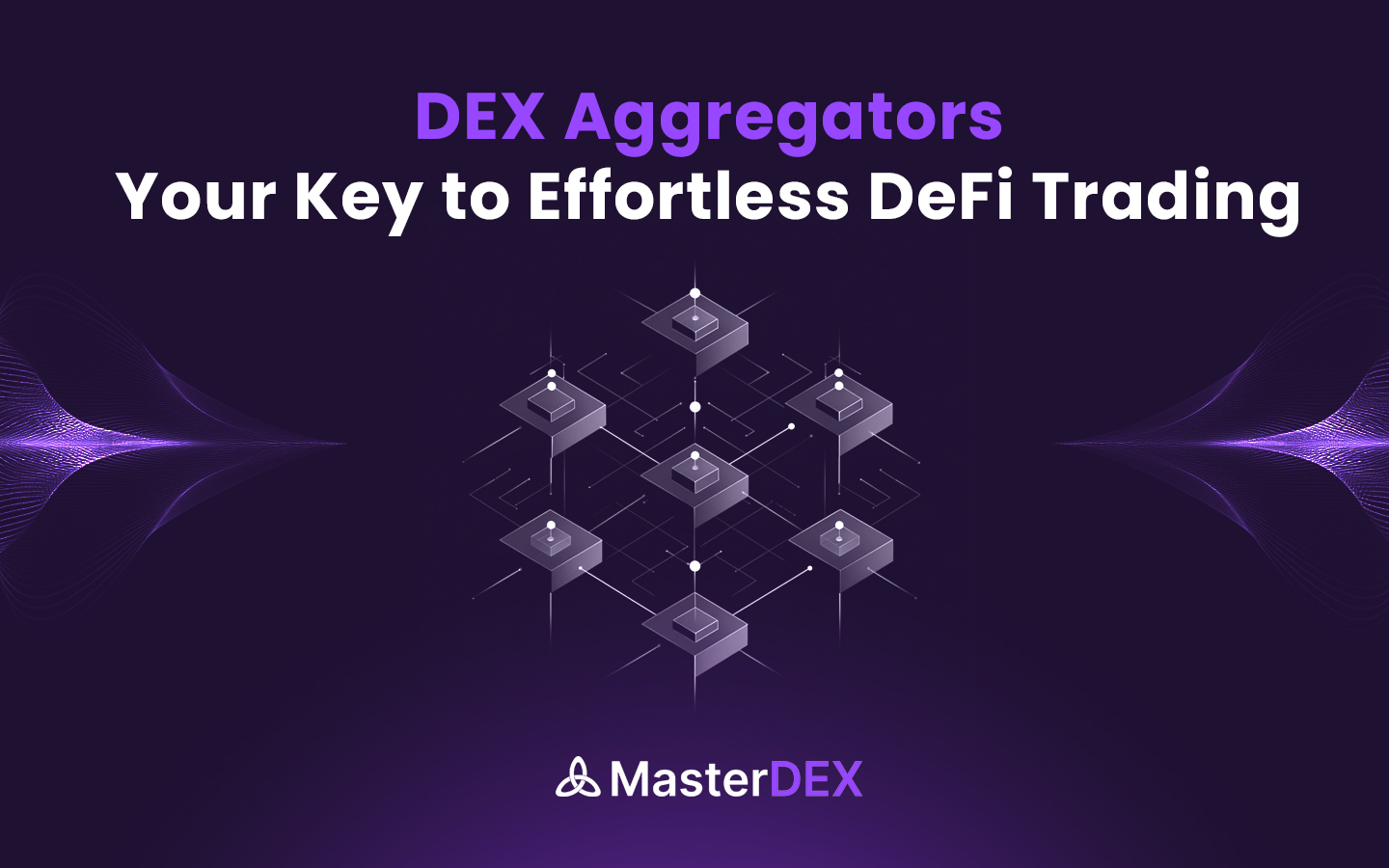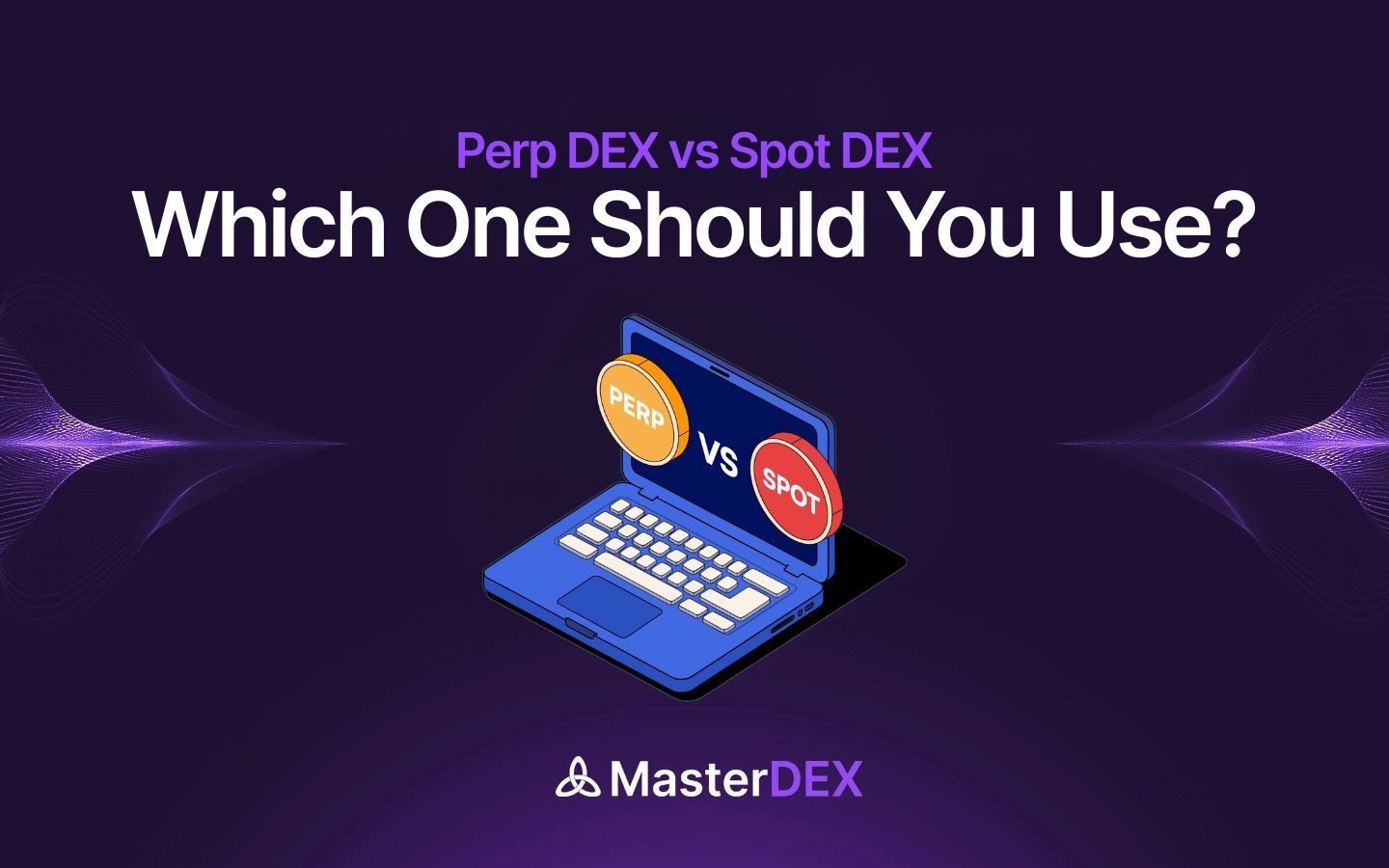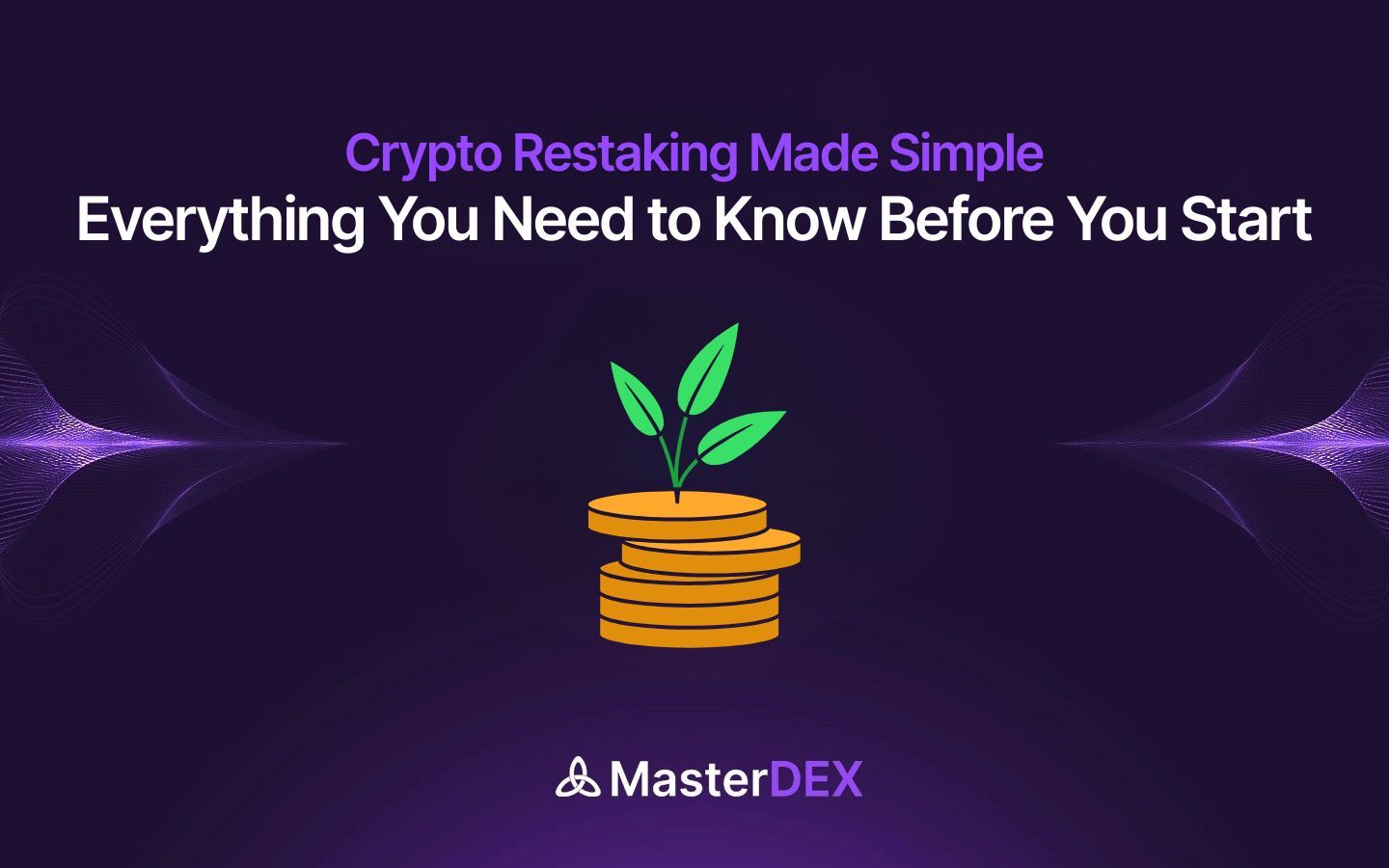Table of Contents:
ToggleIntroduction: The New Reality of DeFi Trading in 2025
The decentralized finance (DeFi) ecosystem in 2025 is larger, faster, and more complex than ever before. What began as a handful of decentralized exchanges (DEXs) offering simple token swaps has evolved into a sprawling multi-chain landscape with hundreds of trading platforms, each with its own liquidity pools, token listings, and fee structures.
While this growth has unlocked massive opportunities, it has also created a challenge: liquidity fragmentation. Prices for the same token pair can vary significantly between DEXs, and traders often waste valuable time and money hopping from one platform to another in search of the best deal.
This is where the DEX aggregator steps in. By connecting to multiple DEXs at once, it streamlines the entire trading process, ensuring traders can access the most competitive prices, deepest liquidity, and most efficient execution paths, all from a single interface. In 2025, a DEX aggregator is no longer just a convenience; it’s an essential tool for anyone serious about navigating the DeFi market.
What is a DEX Aggregator and How It Works?
A DEX aggregator is a DeFi trading platform that connects to multiple decentralized exchanges simultaneously to offer users the most favourable trade execution possible. Instead of trading directly on one DEX, where you’re limited to that platform’s liquidity, prices, and token availability, an aggregator scans a network of DEXs in real time, comparing rates, liquidity depth, and fees, and then routes your trade through the optimal path.
How a DEX Aggregator Works: A Step-by-Step Process
Market Scan: Once you select the token pair and amount you want to trade, the aggregator instantly scans connected DEXs (like Uniswap, PancakeSwap, Curve, Balancer, SushiSwap, etc.) to check available rates and liquidity.
Route Optimization: The platform’s routing algorithm determines the best way to execute your trade, sometimes splitting the order across multiple exchanges or liquidity pools to get a better blended price.
Gas Fee Calculation: A good aggregator doesn’t just look for the best token price; it also considers network transaction costs. For example, on Ethereum, it might avoid high-fee routes and choose more gas-efficient alternatives.
Trade Execution: Once you approve the transaction from your wallet (e.g., MetaMask, Trust Wallet), the aggregator executes the trade across the chosen DEXs. Importantly, your funds never leave your wallet until the transaction is processed, meaning it’s non-custodial.
Settlement: After execution, you receive the purchased tokens in your wallet, and the transaction details are recorded on-chain.
Why DEX Aggregators are a Must-Have for DeFi Traders?
In 2025, the DeFi market has entered a new era of scale and complexity. Hundreds of decentralized exchanges operate across dozens of blockchains, each with its own trading pairs, liquidity depth, and fee structures. For a trader, this environment presents both immense opportunity and significant risk and navigating it without the right tools can mean leaving money on the table.
An aggregator solves these problems by streamlining the entire trading process into one intelligent, automated interface. Here’s why every DeFi trader should have one in their toolkit this year.
1. Instant Access to the Best Prices
Price discrepancies between DEXs are common. The same token pair (e.g., ETH/USDT) can have different rates on Uniswap, Curve, and PancakeSwap at the same moment due to liquidity, demand, and pool composition. Manually checking each platform takes time, and by the time you switch, the price might have changed.
A DEX aggregator eliminates this problem by scanning multiple exchanges in real time and selecting the best available rate for your trade, sometimes even splitting your order across several DEXs to get the lowest blended price.
2. Deeper Liquidity and Reduced Slippage
When you trade a large amount on a single DEX with limited liquidity, the price you get worsens as the trade is executed, this is known as slippage. For example, if you try to buy $50,000 worth of a token in a low-liquidity pool, you might end up paying much more than expected.
DEX aggregators solve this by pooling liquidity from multiple DEXs. Your order can be split across different liquidity pools, making it possible to execute large trades without significantly impacting the token’s price. This is particularly valuable for professional traders, institutions, or anyone dealing in higher volumes.
3. Multi-Chain Convenience
DeFi is no longer confined to Ethereum. Some of the most active ecosystems now include BNB Chain, Polygon, Arbitrum, Avalanche, Optimism, and Base Chain, each with its own exchanges and liquidity pools. Without an aggregator, you’d have to manually switch wallets, interfaces, and sometimes even bridges to trade across chains.
A DEX aggregator that supports multi-chain trading brings all of this under one roof. You can execute trades on different blockchains, or even bridge assets between them, without leaving the platform. This unlocks more trading opportunities and saves hours of switching between tools.
4. Gas Fee Optimization
On networks like Ethereum, gas fees can fluctuate wildly, especially during periods of high congestion. Paying too much in fees can quickly eat into profits, especially for smaller trades.
Good DEX aggregators analyze total trade cost, which means they don’t just focus on token price but also factor in the gas fee. Some even allow you to prioritize cost savings over execution speed, routing your trade through the most gas-efficient path. Over time, this can save frequent traders significant amounts of money.
5. Non-Custodial Security
Security in DeFi is about control. With centralized exchanges (CEXs), you hand over your assets to a platform that holds them on your behalf, exposing you to risks like hacks, insolvency, or withdrawal freezes.
DEX aggregators are non-custodial, meaning you connect your wallet, approve transactions, and keep your funds in your control at all times. This minimizes counterparty risk and aligns perfectly with the core principle of DeFi — “Not your keys, not your coins.”
6. Saves Time and Reduces Complexity
In the early days of DeFi, traders had to open multiple tabs, check prices manually, calculate slippage, and account for gas fees themselves. It was time-consuming and prone to mistakes.
An aggregator centralizes all these tasks into one interface. You see the best rates, liquidity data, gas estimates, and routing options in seconds. This not only improves efficiency but also reduces decision fatigue, allowing you to focus on strategy rather than platform management.
7. Smarter Trade Execution with Advanced Algorithms
Beyond basic price comparison, leading DEX aggregators use smart order routing algorithms to split trades intelligently, factor in volatility, and avoid MEV (Miner Extractable Value) risks. Some platforms are even integrating AI-based analytics to predict market movements and adjust routing dynamically.
This technology-driven approach makes execution faster, more efficient, and less vulnerable to on-chain manipulation.
8. Ideal for Both Beginners and Professionals
Beginners benefit from the simplicity of “one platform for all trades,” while professionals take advantage of advanced features like multi-chain routing, portfolio analytics, and custom slippage settings.
In short, a DEX aggregator is a universal tool that scales with your skill level and trading volume, making it a rare piece of DeFi infrastructure that truly serves all users.
Features Defining the Best DEX Aggregators
In 2025, traders expect more than just price comparison and basic routing from a DEX aggregator. The competitive edge lies in how well a platform anticipates market conditions, adapts to new technologies, and streamlines cross-chain trading. These are the advanced capabilities that separate the top-tier aggregators from the rest.
1. AI-Enhanced Predictive Routing
Basic routing algorithms optimize based on current conditions, but the latest aggregators are using AI to forecast short-term price movements, liquidity changes, and network congestion. This predictive approach allows the platform to execute trades proactively rather than reactively, often securing better net outcomes.
2. Cross-Chain Liquidity Unification
Instead of simply supporting multiple chains, next-gen aggregators integrate cross-chain liquidity protocols. This means traders can tap into liquidity from multiple blockchains for a single trade without manually bridging assets. It effectively turns DeFi into one connected marketplace rather than isolated ecosystems.
3. MEV-Protected Transactions
Miner Extractable Value (MEV) can erode profitability by allowing bots or validators to reorder, front-run, or sandwich your transactions. Leading aggregators now incorporate MEV protection tools, such as private transaction relays, to safeguard trade execution.
4. In-Platform Asset Bridging
The best DEX aggregators integrate bridging directly into the trading interface. This lets users swap tokens between chains in one step, removing the need for external bridge platforms and reducing the number of transactions required.
5. Token Intelligence Dashboards
Beyond trading, some aggregators now provide deep token analytics: real-time liquidity charts, on-chain sentiment data, project news feeds, and even community-driven token ratings. This transforms the aggregator into a research and execution hub.
6. Modular Trading Interfaces
Advanced aggregators are moving toward customizable dashboards where traders can add or remove modules such as charts, analytics panels, alerts, and portfolio views. This personalization helps different trading styles, from casual swaps to professional-level strategies.
By focusing on these forward-looking features, traders can identify platforms that are not just relevant today but also prepared for the evolving DeFi landscape over the next few years.
Common Mistakes Traders Make Without a DEX Aggregator
In DeFi, speed and precision can be the difference between a profitable trade and a costly error. Without an aggregator, many traders unknowingly make mistakes that eat into their returns. Let’s look at a few realistic scenarios that highlight the risks.
1. Paying More Than Necessary
Scenario:
Sarah wants to swap 2 ETH for USDC. On Uniswap, the price is $3,480 per ETH. On Curve, it’s $3,490 per ETH. She goes directly to Uniswap and completes the trade, receiving $6,960.
If Sarah had used an aggregator, it would have routed her order to Curve, where she would have received $6,980, a $20 difference for a single trade. Repeat that over dozens of trades, and it adds up fast
2. High Slippage on Large Orders
Scenario:
Daniel is buying $50,000 worth of a mid-cap token directly from a single DEX. The low liquidity in that pool causes 2% slippage, meaning he effectively overpays by $1,000.
An aggregator could have split his order across multiple pools, lowering slippage to 0.5% and saving him $750 instantly.
3. Losing Profits to Gas Fees
Scenario:
Priya finds a token trading at a favourable rate on a certain DEX but doesn’t realize the gas fee is $90 due to network congestion. By the time the trade settles, the fee eats most of her profit.
An aggregator would have chosen a different route with a $45 gas fee, preserving half of that cost.
4. Missing Cross-Chain Arbitrage Opportunities
Scenario:
Arjun spots a profitable price gap between Polygon and BNB Chain for a certain token. Without an aggregator, he has to manually bridge his assets, a process that takes 15 minutes. By the time his funds arrive, the price gap is gone.
An aggregator with built-in bridging could have executed the swap instantly, locking in the profit.
5. Failed Transactions in Volatile Markets
Scenario:
Lena tries to buy a volatile meme coin during a sudden price pump. The token price changes mid-transaction, causing the trade to fail, and she still pays $20 in gas fees for the failed attempt.
An aggregator with smart routing and slippage control could have adjusted execution parameters automatically, avoiding the failure.
These scenarios show that the cost of not using a DEX aggregator isn’t just about “missing out on the best price”. It’s about lost profits, unnecessary fees, wasted time, and missed opportunities.
Popular DEX Aggregators and Why MasterDEX Stands Out
While there are several established DEX aggregators serving DeFi traders today, each comes with its own strengths. 1inch is widely recognized for its powerful Pathfinder algorithm that finds optimal routes across dozens of exchanges. Matcha, powered by the 0x protocol, is loved for its beginner-friendly interface and transparent fee display. Paraswap is popular among advanced traders for its speed and integration options, while OpenOcean appeals to users seeking both DeFi and CeFi liquidity in one place. KyberSwap combines aggregation with liquidity provision and has deep integrations within the DeFi ecosystem.
MasterDEX – Redefining the DEX Aggregator Experience
While these platforms have shaped the DEX aggregation space, MasterDEX is setting a new benchmark by going far beyond simple trade routing.
Why MasterDEX Stands Out:
- The “Google for DeFi”: MasterDEX scans across blockchains, liquidity pools, and market events, surfacing the most relevant and profitable trading opportunities.
- AI-Driven Trade Optimization: Factors in token price, liquidity depth, volatility, and MEV risks for smarter execution.
- Comprehensive DEX Explorer: Tracks emerging tokens, liquidity shifts, and market trends in real time.
- Multi-Wallet Portfolio Management: View and manage assets from multiple wallets in one unified dashboard.
- Community Intelligence Layer: Blends AI insights with trader sentiment for better decision-making.
- Scalable Multichain Support: Base Chain, Polygon, Arbitrum, Optimism, Blast, Avalanche, Binance, and more coming soon.
- Advanced Tools: AI token scoring, aggregated news feeds, gas optimization, smart alerts, and watchlists, all built into one platform.
MasterDEX isn’t just another aggregator; it’s an intelligent DeFi navigation hub that gives traders the data, tools, and execution power to compete in the fast-moving 2025 DeFi landscape.
Conclusion
In 2025, trading in DeFi without a DEX aggregator is like navigating a city without a map, possible, but slow, inefficient, and full of missed opportunities. As liquidity spreads across multiple blockchains and token markets move faster than ever, aggregators provide the best prices, deeper liquidity, and smarter execution in one place.
While several platforms lead the space, MasterDEX is redefining what traders can expect, combining AI-powered insights, multi-chain access, portfolio management, and real-time market intelligence into a single interface. For anyone serious about maximizing efficiency and profitability in the DeFi market, a reliable DEX aggregator is no longer optional, it’s essential.



